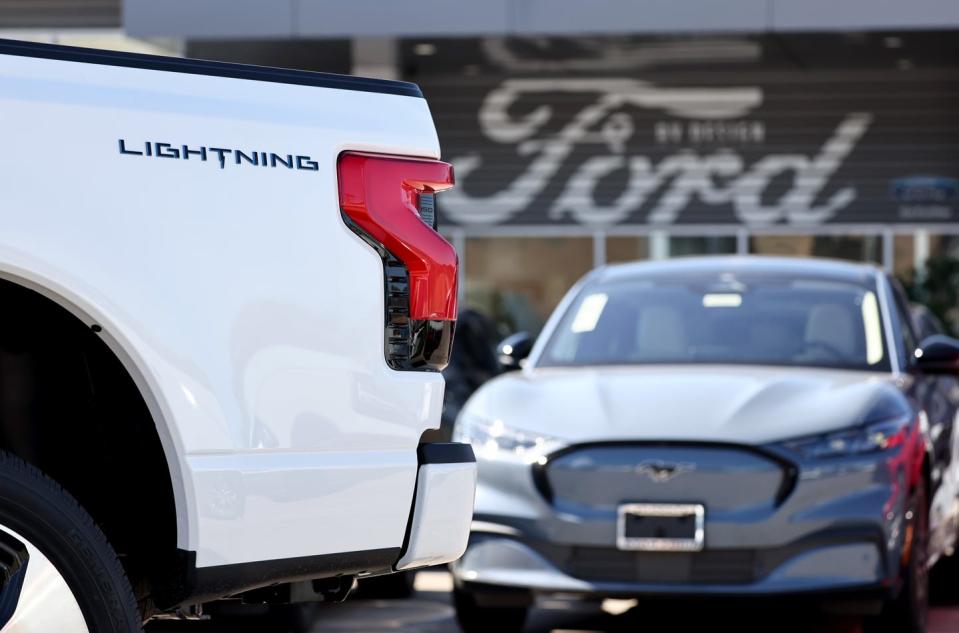Here’s How Long Ford Will Offer Free EV Chargers

Ford will offer free home EV chargers and installation to those who buy or lease a Ford Mustang Mach-E, F-150 Lightning, or E-Transit from October 1 through the end of 2024.
The EV maker is turning to address issues with ease of charging as part of an effort to revitalize electric vehicle sales, with the program dubbed Ford Power Promise, which also includes an eight-year/100,000-mile high-voltage battery warranty.
Ford also offers Plug and Charge functionality for compatible networks, including Electrify America and Tesla's Supercharger stations, linked to a FordPass account.
With the debuts of the Ford Mustang Mach-E and the F-150 Lightning, Dearborn has been able to address two very crucial consumer EV segments, in the process beating the Tesla Cybertruck to market by a significant margin. But perhaps it's safe to say that by now, a significant percentage of those who were already sold on the Mustang Mach-E, F-150 Lightning, or E-Transit have already bought one or two vehicles.
Now comes the hard part: Converting those who have been on the fence about buying an EV, as well as welcoming those who have ignored the whole EV frenzy to begin with.
How does Ford plan to sweeten the deal for the more gradual, cautious adopters of new technology?
The automaker plans to give away free home chargers to those who buy or lease one of its three EVs from now till the end of 2024. And it is also throwing in free delivery of the charger and installation costs, as those can be daunting as well.
"Nearly 90% of shoppers say they would be more likely to buy an electric vehicle if they knew they could charge at home," Ford CEO Jim Farley wrote in a LinkedIn post. "Filling up at home with electricity can be a significant cost save for many owners compared to filling up with gas."
Dubbed the Ford Power Promise, this incentive program also includes an eight-year/100,000-mile high-voltage battery warranty, with this program aimed to quell persistent worries regarding battery longevity.
Another part of the Ford Power Promise is Plug and Charge functionality for compatible networks, including Electrify America and Tesla's Supercharger stations, linked to a FordPass account. Via this function, EV owners will only need to roll up to a station and plug their vehicle in to start a charging sessions, eliminating the need for credit card swipes or fussy apps.

Ford's rollout of this incentive, therefore, targets what is still a major sore point for the whole EV experience: Charging at home and on the road, as not every EV buyer has been able to afford a Level 2 charger in their garage, relying on standard 140- or 240-volt connections. Those have usually been enough if one doesn't cover that many miles in a 24-hour cycle and if one's travel patterns are predictable. But they're hardly the 2024 way to charge.
Ford has also been among several major automakers to strike a deal with Tesla to use its Supercharger network at a time when third-party networks have seemed to struggle, while also making plans to adopt Tesla's NACS standard in the US.
"Cheap lease deals on electric vehicles are popping up everywhere," Farley added. "Ford believes it will take more than jumbo rebates to truly break through with the estimated 19 million people in the US interested in electric vehicles. It will take—you guessed it—convenience, peace of mind, and expert service."
A cheap lease deal actually sounds pretty good to us, we have to admit, given the prices a lot of EVs have been commanding at the moment.
Overall, Ford's Power Promise can be viewed as a long-overdue program to jump start EV sales, which have already lagged enough to result in the cancellation and delay of some planned Ford EVs, including an Expedition-sized SUV model, as well as the dialing down of F-150 Lightning production.
Is ease of charging the main barrier to EV adoption, or are EV prices a slightly greater hurdle at the moment? Let us know what you think are the three top barriers to EV adoption in the comments below.

 Yahoo Autos
Yahoo Autos 